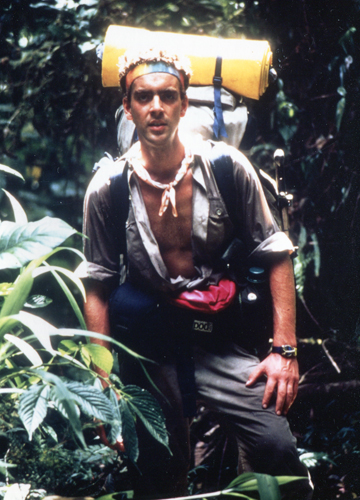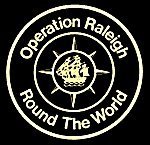 Operation Raleigh
Operation Raleigh
was a four year round-the-world expedition which started from England in November 1984. The aim was to involve 4000 young people of many nations (2000 from the UK) in a variety of challenging and adventurous projects of a scientific and community aid nature. It consisted of 16 phases, each of approximately three months, involving young people aged 17-24 years, who were called ‘ venturers’. In 1992, following the increased number of international volunteers, the venture was renamed ‘Raleigh International‘ with a continued organisational focus on youth and sustainable development.
Operation Raleigh Expedition 10F
(July to October 1987) was located on the remote Indonesian Island of Seram. Over 200 venturers, operations staff and scientific leaders from around the world took part. This website celebrates the achievements of the international expedition to Seram and the extraordinary adventure shared by the venturers and staff during our 3 months there. It was created by Lorna Charlton who was one of the science team leaders on the expedition. During the expedition many scientific research projects and a community aid project took place. The community aid project was the building of a school in the highland village of Manusela.
The research projects (listed below) were led by specialist scientists (one or two leaders per project) and each of these were conducted over the entire 3 months of the expedition. The venturers however switched to a new project at the end of each month so that each venturer was able to experience two different research projects and assist with the community aid project during the expedition.
The collective results of the Earth, Biological, Zoological, Marine and Human research projects were designed to contribute to:
1. A study of the altitudinal zonation of plant and animal life in Manusela National Park (MNP) from sea level to the summit of Mt Binaia.
2. A greater understanding of the biological and geological history of the south-east Asian Region.
3. MNP management activity development by the Forest Service of the Indonesian Government.
The Research Projects
Soils Survey: Digging of sample pits and recording of soil types from sea level to the summit of Mt Binaia (3027m)
Rain Forest Analyses: Documentation of 1 hectare plots of forest by taking samples and measurements of all trees and shrubs in each plot. Representative plots were in all the major vegetation zones within the MNP ie. lowland, montane and upper montane forest.
Fern Collection: Collection of ferns from sea level to the summit of Mt Binaia.
Orchid Survey: Location, collection and drawing of ground level and epiphytic MNP orchids.
General Insect Collecting: Trapping, collection, sorting and preservation of beetles, bugs, flies etc. for study at the British Museum (Natural History).
Lepidoptera Biogeography: Using Mercury Vapour lamp traps powered by petrol generators, the collection and preservation of specimens of night-flying moths for biogeographic study.
Lepidoptera Ecology: Study of the feeding and reproductive biology of butterflies. Larvae were collected for hatching.
Insect Herbivory: Study of forest canopy insect feeding. Insects were collected in ground level sample trays using knock-down insecticide pumped into the canopy by fogging machines raised on pulleys.
Herpetology: Using pitfall traps, drift fences and other methods, patrolling by day and night to collect and preserve specimens of snakes, frogs and toads for an inventory of specimens in MNP.
Ornithology: Bird spotting and documentation of the species and their distribution within MNP. Behavioural and feeding studies of individual conspicuous species and endemics.
Bat Survey: Using mist nets and harp traps, both fruit and insect eating bats were collected for taxonomic study. Faecal samples and pollen from fur were taken and analysed to investigate diet in the species caught. Behavioural studies of large fruit eating bats in large colonial roost sites.
Mammals: Collection and documentation of bats and ground mammals (e.g. rats, shrews) from the various MNP vegetation zones using a variety of traps (mist nets, box and harp traps) for a biogeographic study of mammals across the Lesser Sunda islands.
Bioresources: Investigation and documentation of the human usage of biological resources within the MNP through discussion with the human residents of the MNP.
Wild Pigs: Investigation and documentation of the human usage of MNP’s pigs, and taking anatomical samples for genetic analysis. Involved pig hunts and analysis of jaw bones of pigs retained by villagers in the MNP enclave.
Nautilus: The trapping of the archaic chambered marine mollusc nautilus off the coasts of Ambon and Seram using large baited cage traps. The traps were set from boats and left 24 to 48 hours before recovery. Tissue samples were taken for genetic study and some specimens were maintained in aquaria for physiological studies.
